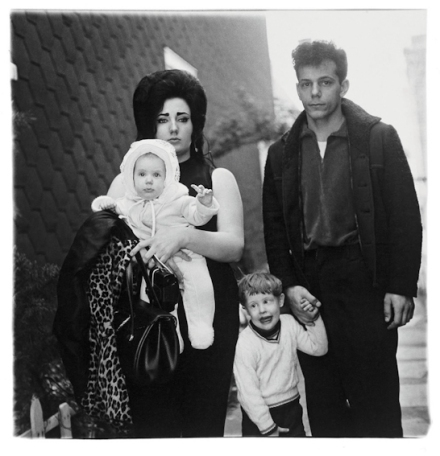 This image came up as a discussion topic on the WeAreOCA blog site and I wanted to try and analyse my reaction to it. I seemed somewhat out of kilter with other readings of the image, and whilst I don’t necessarily think that is wrong, I still felt that I should try and work out why, what I see in the image, is as it is.
This image came up as a discussion topic on the WeAreOCA blog site and I wanted to try and analyse my reaction to it. I seemed somewhat out of kilter with other readings of the image, and whilst I don’t necessarily think that is wrong, I still felt that I should try and work out why, what I see in the image, is as it is.
My contention in the blog piece was that Sharon – who had posted the piece – had somewhat directed us to read certain aspects into the image. Titled “The Pain of looking” the blog piece seemed to me to ensure that as the viewer read/viewed and tried to comprehend both the artist’s intent and their own reaction to it, that there was always going to be a discourse regarding the notion of pain within the frame. I want to see if I have taken that too literally, to try and elicit any other reading by studying the image and my reaction after re-reading it.
That the image contains four individuals doesn’t for me detract that this is a portrait. It is combinatorial portrait of four people but also a number of other individual and collective portraits and I want to look at those to see how that affects the imposition of narrative, to see if my perspective is altered. I am sure it will be, but where to?
Looking firstly at individual portraits and placing them apart from each other:
The man, almost as the ‘Mona Lisa’ has an enigmatic expression, he could be about to frown or perhaps, more likely in my view, maybe smile. He doesn’t seem unhappy, possibly resigned to having his picture taken, but as Barthes says, all (knowing) photographs of oneself ensures that the photographed is in a state of pose. Similarly the woman might be about to smile, if I keep looking at her she starts to want to smile to me. The baby is, well a baby. And the boy gives us a reason to question the image as a whole. Are we looking at a ‘normal’ boy ‘gooning’ for the camera, a boy with physical or mental issues? Difficult to say. The boy though has another obvious physical characteristic in the image:
He appears to be holding himself in a very typical young child-like pose when wanting to go to the toilet, maybe his expression is accentuating that need which is being put on hold because his parents (we assume his parents) have acceded to having their photograph taken.
Looking at the relationships again and seeing how they work within the frame:
The way the baby is being carried. Not in a cradled position, not facing her mother (there’s that assumption again); but facing away from the family toward the photographer, an act of complicity by the mother (?) and not a notion of concern seemingly from anyone else present. So, the adults seem happy to have the baby pose for the camera, and they are ‘knowing’ that the boy is also camera looking (despite the expression and perhaps the need for a toilet!). So, to the boy, and maybe this is the subject that catalyses the concerns over pain? Again there are a few things to consider:
The adult male (father?) holds the boy’s hand. It doesn’t seem to be a squeeze suggesting that the father(?) isn’t overly concerned about the boy running off or amok. No other restraint, as the adults (and baby) pose calmly for the camera. Holding hands is a normal parental/guardian function. It bonds the relationship between child and adult whilst maintaining some existential control over the inadvertent wanderings of the child. As a father I enjoyed holding my son’s hands, and still enjoy their physical contact with me now, we embrace, it is something that I treasure, so I can’t see anything particularly troubling in this hold.
I am very keen to see where the painful connection might come from. I had a look at the image again and then wondered about editing it:
I have ‘straightend’ it (top) and purposefully left the ‘marks’ of that process. This did bring something to mind about the composition, and it is about the adults. It seemed to mark the fact that male is posed with the light behind him and the woman with the dark behind her, there is the definition of a wall edge between them, certainly at head height and maybe this graphic junction causes the image to have a pain about it? But still I can’t find a pain. At most I can perhaps distill a faint melancholic feel about the expressions of the two adults. It is a questioning expression on the boy; but they appear to be American ‘middle class’, comfortable, but not rich, and if it is about the boy then how does the ‘Pain’ that others have found in the image become excited by the boy? What am I missing? What is it this picture that I can’t see? That the human condition is painful seems to me to be an all to easy epithet based on an absence of any epistemological evidence on view. These people aren’t distant from each-other, the woman looks somewhat vacantly over the right shoulder of Arbus, but she doesn’t appear impatient, possibly resigned, is it that vacancy that suggest pain – with a post second world war society that that is reducing it’s care for the family in order to chase the materialist/capitalist dream(?)?
Perhaps it is the resignation that people recognise as painful? Is it that she is shouldering the burden, holding the baby, her coat, perhaps the boy’s coat, her handbag and a camera case? If it is a camera case, then is it Arbus’? And if so, that would add to their acquiescence in the process of having their picture taken, surely- so we can assume that they aren’t in pain, because why would would they want to exacerbate that pain. No, surely any pain reflected in the image must surely come from the viewer?
My reading still lacks the pain of others . I do see the forecast of a corporate pain, but that is a reflective premonition, not specifically of this family unit, but of the family unit that was to be forever upturned by corporate America. How, by the fashioning of the American dream from the post-war boom (that stemmed from America’s ability to profit from the carnage of the European and Asian killing fields), that turned a utopian vision of materialism into a post Randian dystopia in pursuit of the dollar (now of course the RMB), but that isn’t surely what others have seen. Or is it?
Help needed……
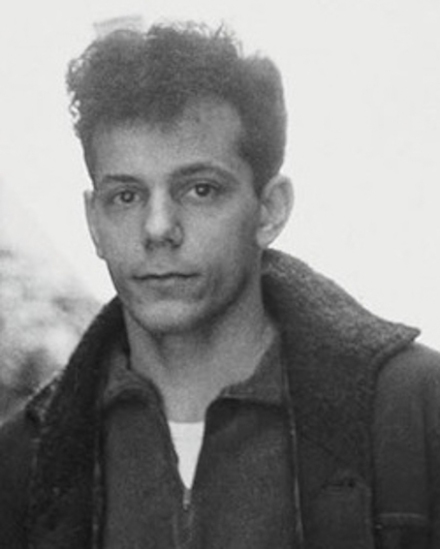
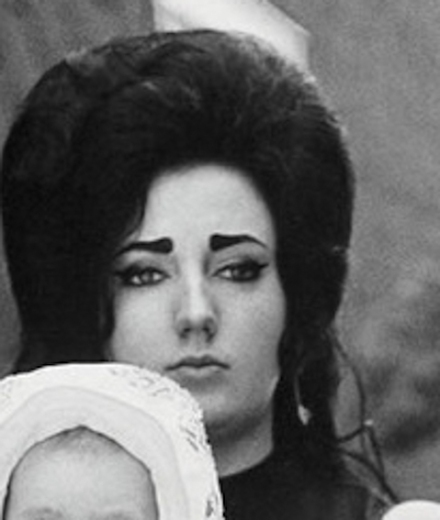
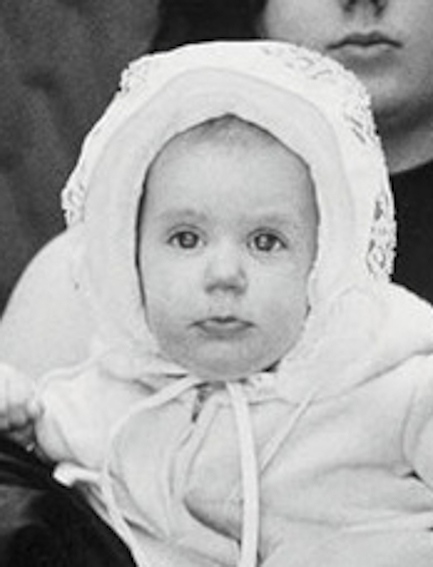
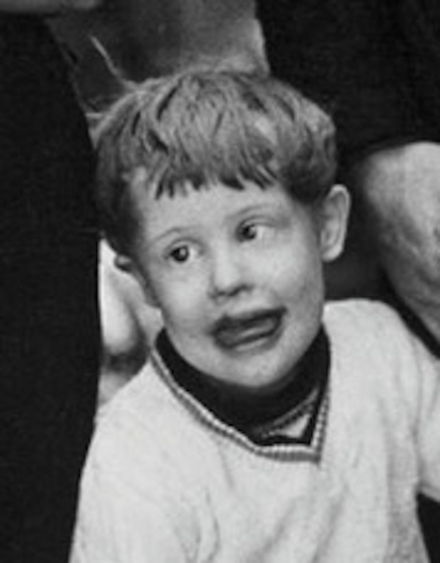
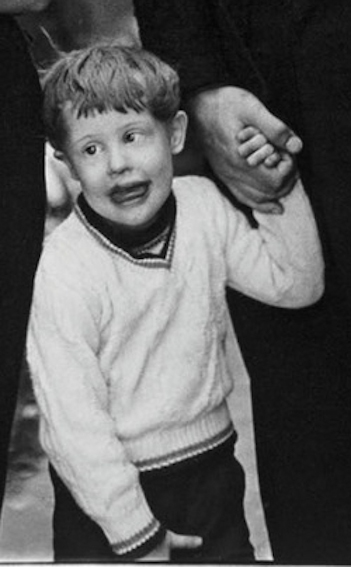
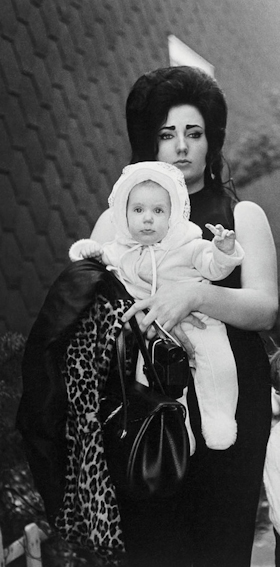
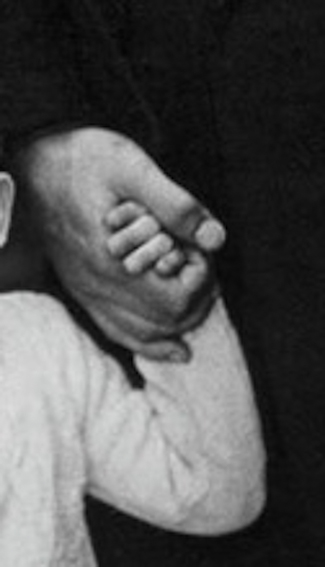
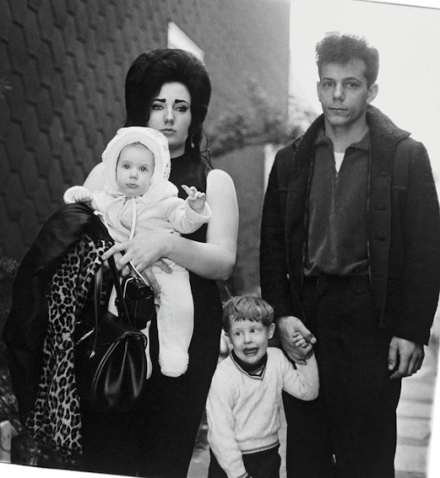
I’m pleased you decided to do this because it makes me think again about my response, as it did when you commented on the WeAreOCA post and suggested that Sharon was directing us to loo for ‘pain’. I actually didn’t see ‘pain’ in the image so I translated that into how Arbus might be reflecting her own pain.
What I actually saw was a young couple with children and then related it to my own experience – married and taking on family responsibilities at a young age. Like you, I also wondered about the little boy and whether he had some kind of disability or if it was just ‘making faces for the camera’ which children of that age can do. I saw the couple as ‘working class’ but reasonably well-off rather than ‘middle class’ – the types of clothes they were wearing and hairstyles; reminiscent somehow of Elvis Presley and his milieu, bugging hair and pencilled in/heavy eyebrows.
If it’s true that Arbus spent time with her subjects then, presumably, she knew something about them that we don’t. Wouldn’t It be great if one of them actually commented on the experience as did Lange’s subjects?
Re your last paragraph – I don’t see the forecast of a corporate pain etc – just a young couple dressed,what looks like, in their best. I could hypothesize all kinds of aspects such as them looking forward to a bright future and believing that if they worked hard then their family could have a good life and their children would prosper. But then – those would be the dreams that I had – thankfully realised. Others haven’t been so lucky.
I ordered the book ‘Singular Images’ from the library and will be collecting it on Thursday so will report back.
I wanted to try and work out why my response seemed so different. I can accept that it was so, but I wanted to analyse – in an amateur way – what informed my response. Still unsure.
It didn’t seem at all amateur to me but a good way to analyse; particularly extracting the various sections of the image to look at more closely.
‘bugging’ hair!! I thought I’d inputted ‘beehive hairdo’!